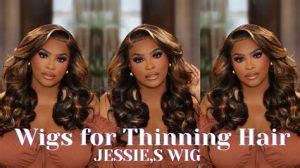Hair loss is a disheartening and often embarrassing problem that affects millions of people worldwide. Whether it’s due to genetics, medical conditions, hormone imbalances, or aging, hair loss can take a toll on our self-esteem and overall well-being.

Luckily, hair replacement hair has emerged as a viable solution, providing individuals with a non-surgical and natural-looking way to restore their crowning glory. With advancements in technology and materials, hair replacement hair has become increasingly sophisticated, offering a wide range of options to suit every need and preference.
Hair Replacement Hair: A Growing Industry
The hair replacement hair industry is booming, with a projected market value of over $10 billion by 2026. This rapid growth is attributed to a surge in hair loss among both men and women, as well as growing awareness of hair replacement options and technological advancements.
Types of Hair Replacement Hair
There are numerous types of hair replacement hair available, each with its unique benefits and drawbacks. Here are some of the most common options:
-
Wigs: Wigs are full head coverings that provide complete hair replacement. They come in a variety of materials, including synthetic, natural human hair, and a blend of both.
-
Toupees: Toupees, also known as hairpieces, are smaller than wigs and cover only a portion of the head. They are typically used to conceal bald spots or hair loss in specific areas.
-
Hair Extensions: Hair extensions are used to add volume, length, or highlights to existing hair. They come in various forms, such as clip-in, tape-in, and keratin-bonded extensions.
-
Scalp Micropigmentation (SMP): SMP is a non-surgical procedure that creates the illusion of hair follicles on the scalp. It is particularly effective in concealing thinning hair or small bald spots.
Selecting the right hair replacement hair can be daunting, but here are a few factors to consider:
-
Hair Type: Determine your hair type (straight, wavy, curly, etc.) and choose hair that closely matches it for a natural look.
-
Hair Color: Match the hair color to your natural hair, or experiment with a different shade to enhance your features.
-
Head Shape: Consider the shape of your head and choose a hair replacement that complements it. Oval-shaped heads can wear most styles, while round or square heads may prefer hair that adds height.
-
Lifestyle: Choose a hair replacement hair that suits your lifestyle. Active individuals may prefer low-maintenance options like wigs or extensions, while those with a more formal lifestyle may opt for custom-made hairpieces.
Benefits of Hair Replacement Hair
Hair replacement hair offers a myriad of benefits, including:
-
Improved Confidence: Regaining a full head of hair can significantly boost self-confidence and improve overall well-being.
-
Enhanced Appearance: Hair replacement hair can help you look younger and more attractive, making you feel more confident about your appearance.
-
Concealed Baldness: Hair replacement hair effectively hides hair loss, providing you with a natural and seamless look.
-
Non-Surgical Solution: Hair replacement hair offers a non-surgical alternative to hair transplants or other invasive procedures.
While hair replacement hair can be life-changing, there are a few considerations and common mistakes to avoid:
Considerations:
-
Cost: Hair replacement hair can be expensive, so set a realistic budget before exploring your options.
-
Maintenance: Hair replacement hair requires regular maintenance, such as washing, styling, and maintenance by a professional.
-
Durability: The durability of hair replacement hair varies depending on the material and style. Choose high-quality hair that will last longer and maintain its appearance.
Common Mistakes to Avoid:
-
Choosing the Wrong Hair Type or Color: Mismatching the hair type or color with your natural hair can result in an unnatural look.
-
Overusing Hair Products: Avoid overloading your hair replacement with products, as this can weigh it down and make it look fake.
-
Ignoring Maintenance: Neglecting regular maintenance can damage your hair replacement hair and shorten its lifespan.
-
Improper Installation: Improper installation of hair replacement hair can lead to discomfort, irritation, or even hair loss.
1. How long does hair replacement hair last?
The lifespan of hair replacement hair varies depending on the material, style, and maintenance. On average, wigs typically last for about 6-8 months, while toupees and hair extensions can last for 3-6 months.
2. Can I swim or exercise with hair replacement hair?
It depends on the type of hair replacement hair you have. Some wigs and hair extensions are designed to be waterproof and can be worn while swimming or exercising. However, it is important to consult with your hair replacement specialist for specific instructions.
3. Can I cut or style my hair replacement hair?
Yes, most types of hair replacement hair can be cut and styled to your preference. However, it is always recommended to have a professional hair stylist perform any major styling changes.
4. Is hair replacement hair expensive?
The cost of hair replacement hair varies widely depending on the type, material, and customization required. Wigs typically range from $100 to $2,000, while toupees and hair extensions can cost anywhere from $300 to $1,000.
5. How can I find a reputable hair replacement specialist?
Ask for recommendations from friends, family, or your doctor. You can also search online for hair replacement specialists in your area and read reviews from previous clients.
6. What are the alternatives to hair replacement hair?
If hair replacement hair is not an option for you, there are other alternatives available, such as hair growth treatments, laser therapy, or scalp micropigmentation. Consult with a dermatologist or hair loss specialist to explore these options.
